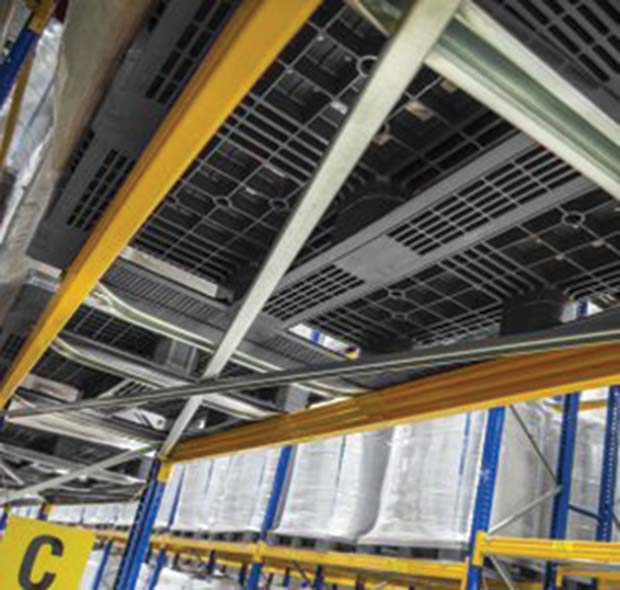Goplasticpallets.com share their expert advice on why choosing the right pallets for the application first, will save customers time and money.
 When purchasing any goods, it goes without saying that cost is a fundamental factor. We all want a fair price. However, time and again we see customers purchase pallets which are unsuitable.
When purchasing any goods, it goes without saying that cost is a fundamental factor. We all want a fair price. However, time and again we see customers purchase pallets which are unsuitable.
Why? Because their purchasing decision has been solely driven by cost, ignoring needs.
Yet, without considering the needs, companies risk purchasing a pallet which is not up to the job. Ultimately, costing more money.
Below are our top eight questions to consider before purchasing plastic pallets:
1. Think application first What application are you purchasing for?
This will tell you all you need to know the type of pallet you really need. Choosing the right pallet for your application first will tell you what size, strength and the load you’ll be able to place on the pallet. It will also help establish the durability and any key specifications you need. You’ll also avoid wasting money on a pallet that doesn’t fit the job, cannot withstand the load and handling, and the cost of repairs or replacements.
2. What type of supply chain are you using?
Are you using the pallet in a closed loop supply chain, or shipping it one way for export?
This will help decide what “duty” or strength of pallet you need. It’ll also determine level of investment. Many one-way consignments need a much more lightweight pallet, whereas a closed loop supply chain might need a heavy-duty pool pallet for high-level, repeat use.
3. Watch your weight
How much weight are you going to put on the pallet? Will the weight be evenly distributed, or will it concentrate the load in certain areas?
The weight of your load and how it’s spread across the pallet is another important factor. It’ll determine how strong and durable the pallet needs to be.
4. How will the load sit on top of the pallet?
Thinking of the product and its packaging, will the load overhang the pallet? Will the lips interfere with the consignment?
Many pallets come with lips as standard, but most models have a “no lip” option. For example, if you’re handling sheet materials, the lips might interfere and imprint into the product so a “no lip” option would be suitable.
Furthermore, think about how goods will interact with the top deck? Could the application benefit from a smooth closed deck, or an open, honeycomb structure.
5. What material handling equipment do you currently have?
…. or is any planned for the future? Equally, is automation in place or plans for this to happen down the line? The type of equipment used will dictate whether you need a nonperimeter or a full-perimeter pallet.
6. Where will the pallets be stored? Will they be stored on racking?
Do you plan to store the pallets in racking, and if so, what kind? Will the pallets be stored outside, are they likely to get wet? Could the temperature get very cold or hot? Firstly, if in racking, think about the distances between the beams or supports. How could this affect the loading capacity?
Will you double stack the pallets in storage? This will affect the base design you choose, and also require the “static load capacity” of the pallet to be considered.
7. Quantity and lead times
How many pallets do you need? Is this a one-time purchase, or will you need several deliveries? Do you need additional printing, added to the pallet, and how quickly will you need them?
All these factors control how quickly your pallets can be delivered. More specialist style pallets, in lower demand, will often come with a longer lead time if they are not made regularly. Suppliers who hold stock in-house will be able to offer more flexibility.
8. Know your application limitations
For example, if the pallet is going to be used for exporting, a lightweight nestable pallet is an inexpensive alternative to wooden. Unlike wooden, plastic pallets do not need ISPM15 treatment to meet export regulations. Furthermore, the cost comparison between a wooden and plastic nestable pallet for export is marginal, and of course, the plastic can be recycled. Increased strength, consistency and no need for heat treatment means plastic wins hands down.
Before purchasing any returnable plastic transit packaging, customers should fully understand the application, consider its limitations, choose wisely and ask the experts.
Tel: 01323 744057




Comments are closed.